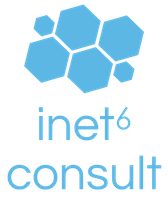
|

|

|
|
Home ·
BGP Expert Test ·
What is BGP? ·
BGP Vendors ·
Links ·
Archives ·
Books ·
My New BGP Book | ||
 (advertisement)
(advertisement)
| ||
|
New miminum allocation size at RIPE (posted 2004-01-10)
The RIPE NCC has changed its policy regarding the initial allocation that new LIRs receive. The rule that efficient use for at least a /22 must be demonstrated is now off the table, and the minimum allocation is now a /21 rather than a /20. See the announcement. RIPE also maintains a list of minimum allocation and assignment sizes for their address blocks (linked from the announcement), but this is pretty much useless because filtering on allocation size is too restrictive while filtering on assignment size is isn't restrictive enough for many address blocks. So be very careful when implementing prefix length filtering. Without the jargon, please! Right. Most of us get our IP addresses from our ISPs, and ISPs usually have one or more blocks of IP address space of their own. Having their own address space is important for ISPs because this allows them to be independent from their ISPs by allowing them to change ISPs without having to change addresses. (Obviously this is useful to end-users as well, but this changed policy applies to ISPs.) Until now, ISPs that wanted to get address space of their own needed to show that they and/or their customers would start using 1024 addresses (a /22) immediately. In this case, they would get a block of 4096 addresses (a /20). The advantage of having such a large block is that everyone in the world is prepared to store a pointer to it in their routers, making the addresses globally usable without limitations. Since some networks only accept routing information for the smallest address blocks that RIPE and the other Regional Internet Registries (ARIN, APNIC and LACNIC) give out to ISPs. Smaller address blocks aren't entirely useless, but they may not be globally reachable without having to depend on the ISP the addresses came from, which of course limits ISP independence. Since RIPE is now giving out blocks of 2048 addresses (/21) from some of their address blocks, networks are expected (and pretty much forced) to accept these blocks. This is good news for small ISPs that want their own independent block: they no longer have to jump through hoops trying to show they need 1024 addresses, or make do with only semi-independent addresses. Note that the other RIRs haven't changed their policies (or at least there are no announcements to be found). ARIN's policy for instance, is even more restrictive than the old RIPE policy: multihomed networks must show efficient use of a /21 to get a /20, single homed ISPs must even show efficient use of a full /20 to get a /20. So for now the good news only applies to ISPs in the RIPE region, which is roughly Europe, the Middle East, Africa north of the Sahara and the former Soviet Union. For more info, see the RIR policy comparison matrix.
|
